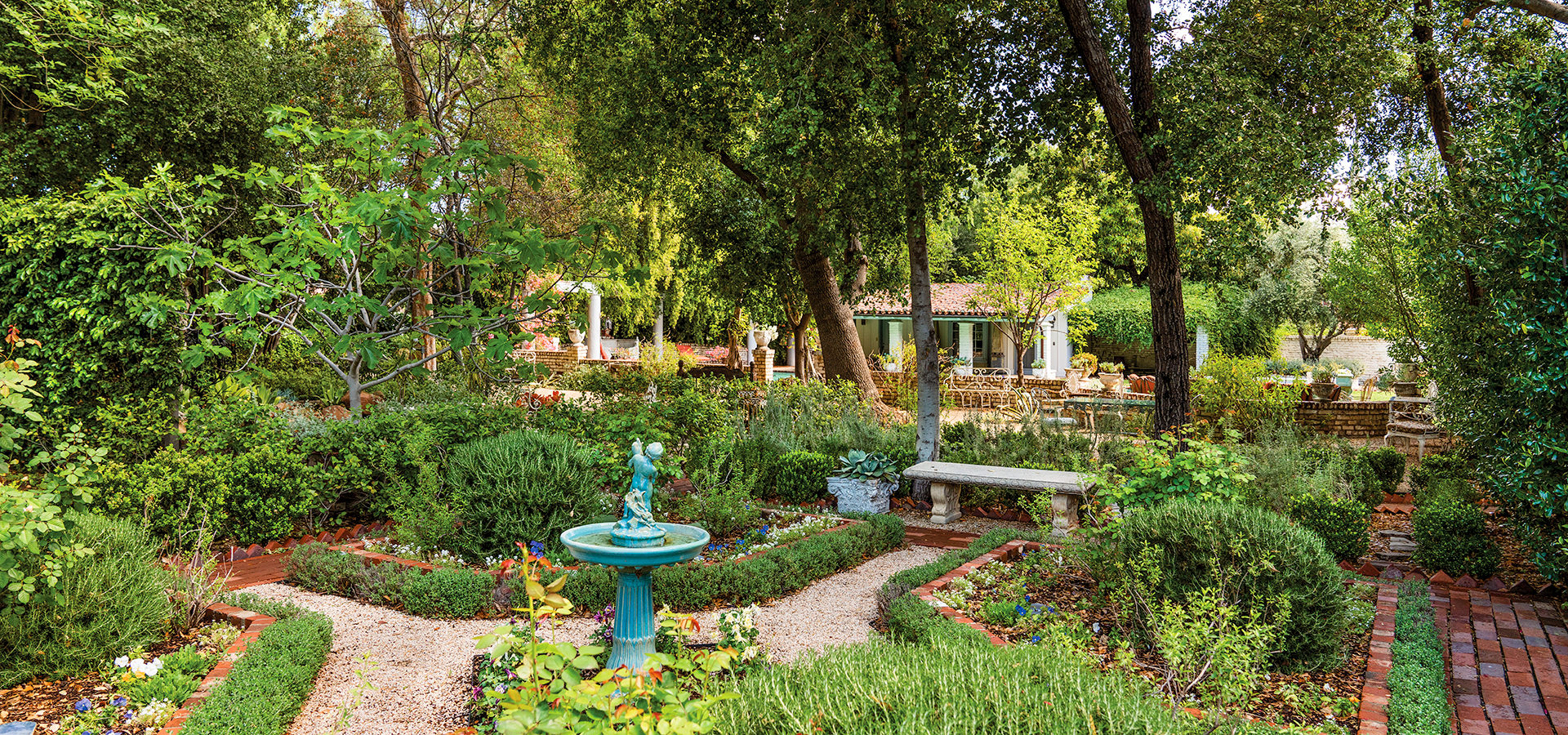Penny Alpert doesn’t take orders from ghosts, yet it’s hard to imagine a more faithful restoration of a deceased woman’s beloved garden than what Penny and her husband, Glen, have accomplished. When the couple acquired an Andalusian-style ranch property in Encino built in 1934 for movie star Ann Dvorak (1911–79) and her British actor husband, Leslie Fenton, they realized they’d taken on a huge job. The formerly manicured property had been swallowed in a billowing sea of Boston ivy and was choked with dying trees and terminally sun-scorched oleander hedges.
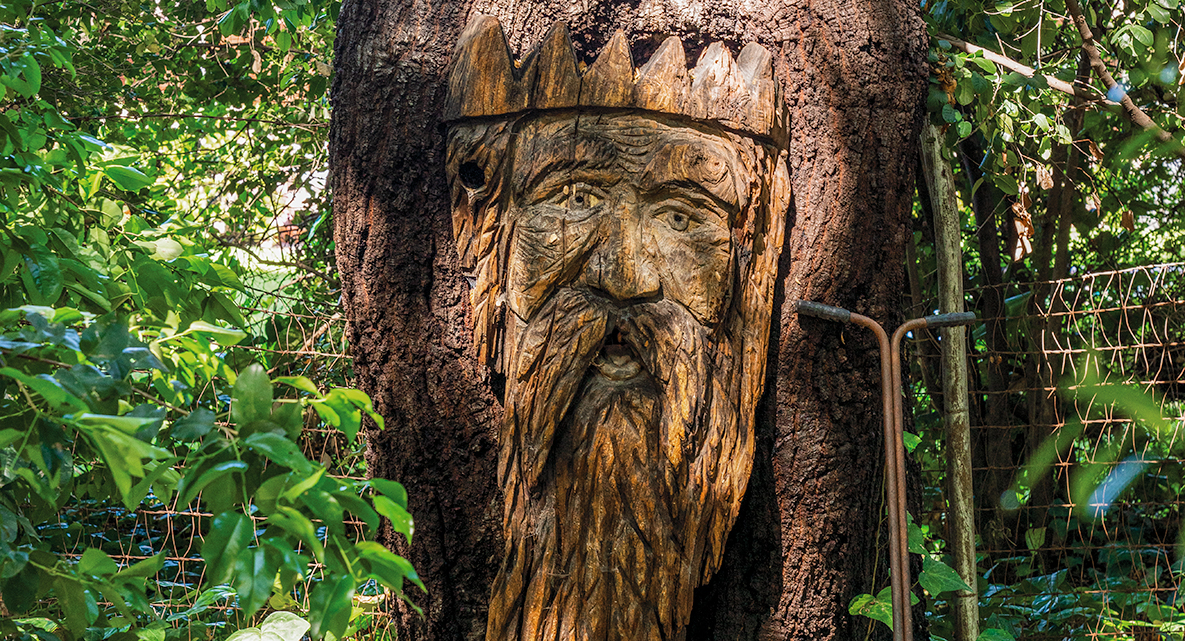
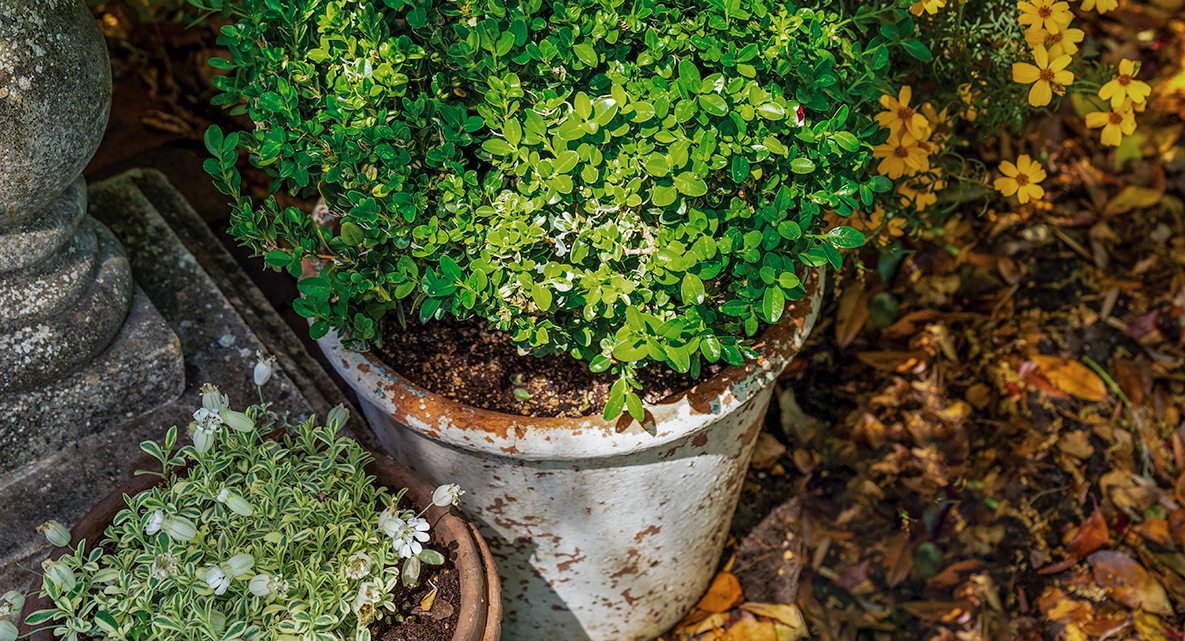
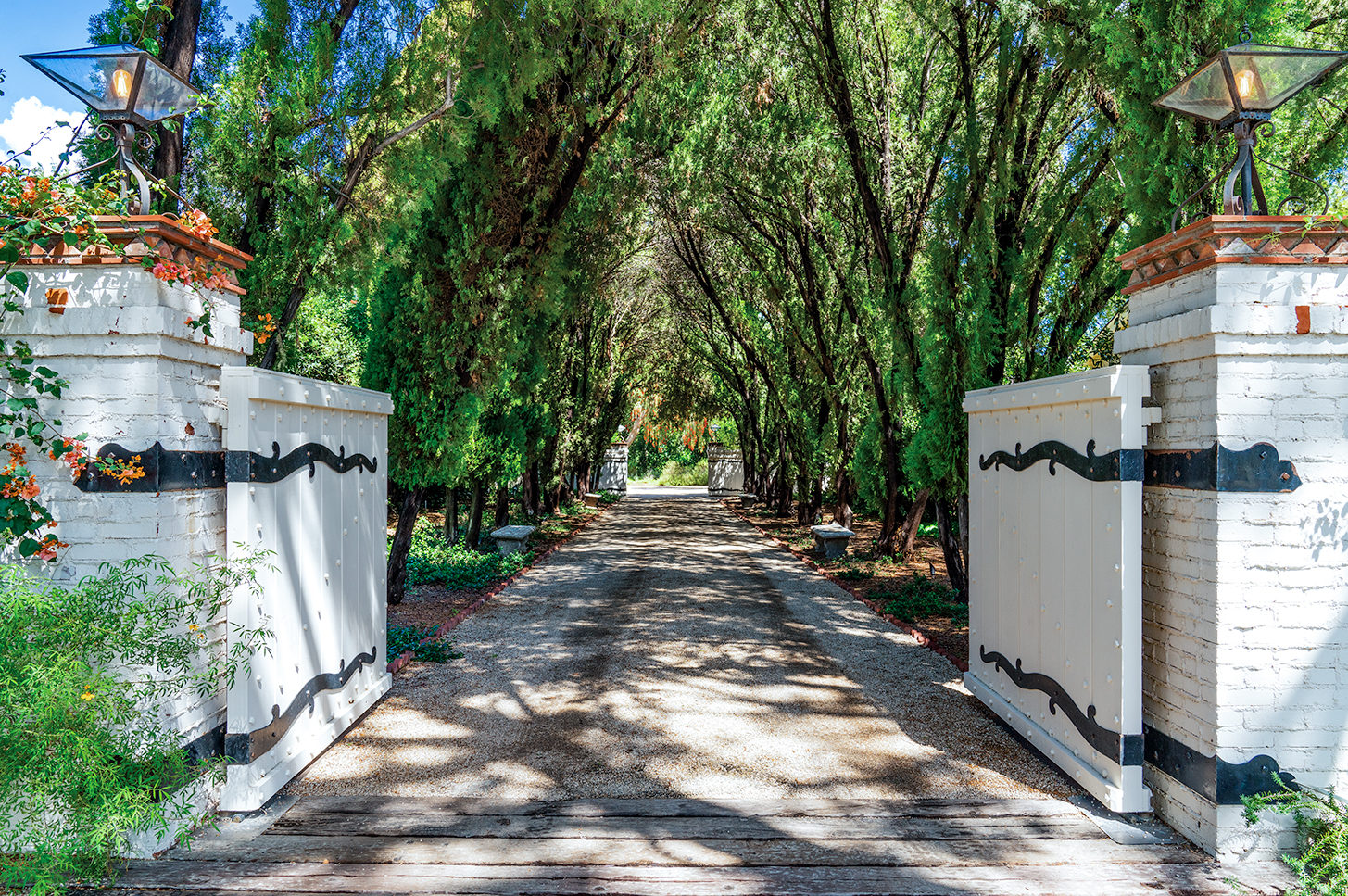
Yet the beauty—and the history—shone through everywhere.
“A lot of what you are seeing, from an architectural standpoint, is original to the home. But sadly, some of the original architecture had been lost or altered by prior owners. We kept the best of what remained, and reimagined the balance,” Penny shares.
“Ann Dvorak had a great connection to the gardens. She loved being outdoors, and she had a green thumb. Her time on the ranch was the most stable, happy time of her life.”
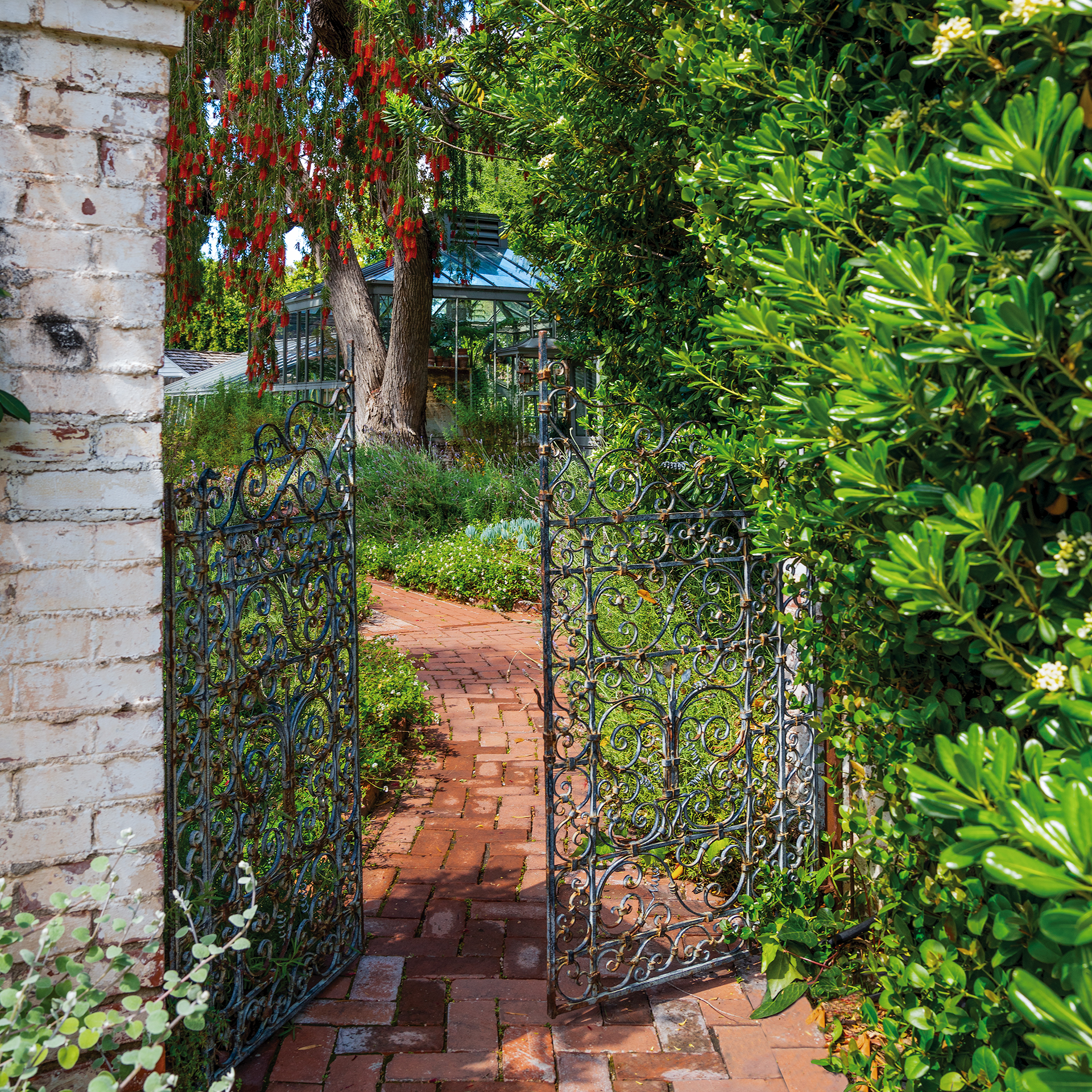
A primary example are the 1930s tiles surrounding the living room. They were excavated from Jayne Mansfield’s Pink Palace and were originally installed for Rudy Vallee, who owned the home before the actress. “It is meaningful to live with such delightful history surrounding us,” Penny says.
Under Ann Dvorak’s ownership, the property had been a well-kept working ranch, with more than 30 acres of walnut groves, livestock, and an enormous greenhouse in which the Hollywood actress propagated orchids and other exotic plants. When Dvorak and her husband divorced in 1946 she sold off the walnut groves in parcels that were developed into suburban homes, leaving only the main house and outbuildings—barn, pool house, servants’ quarters, all built in Spanish Colonial Revival style—on the remaining 2 acres.
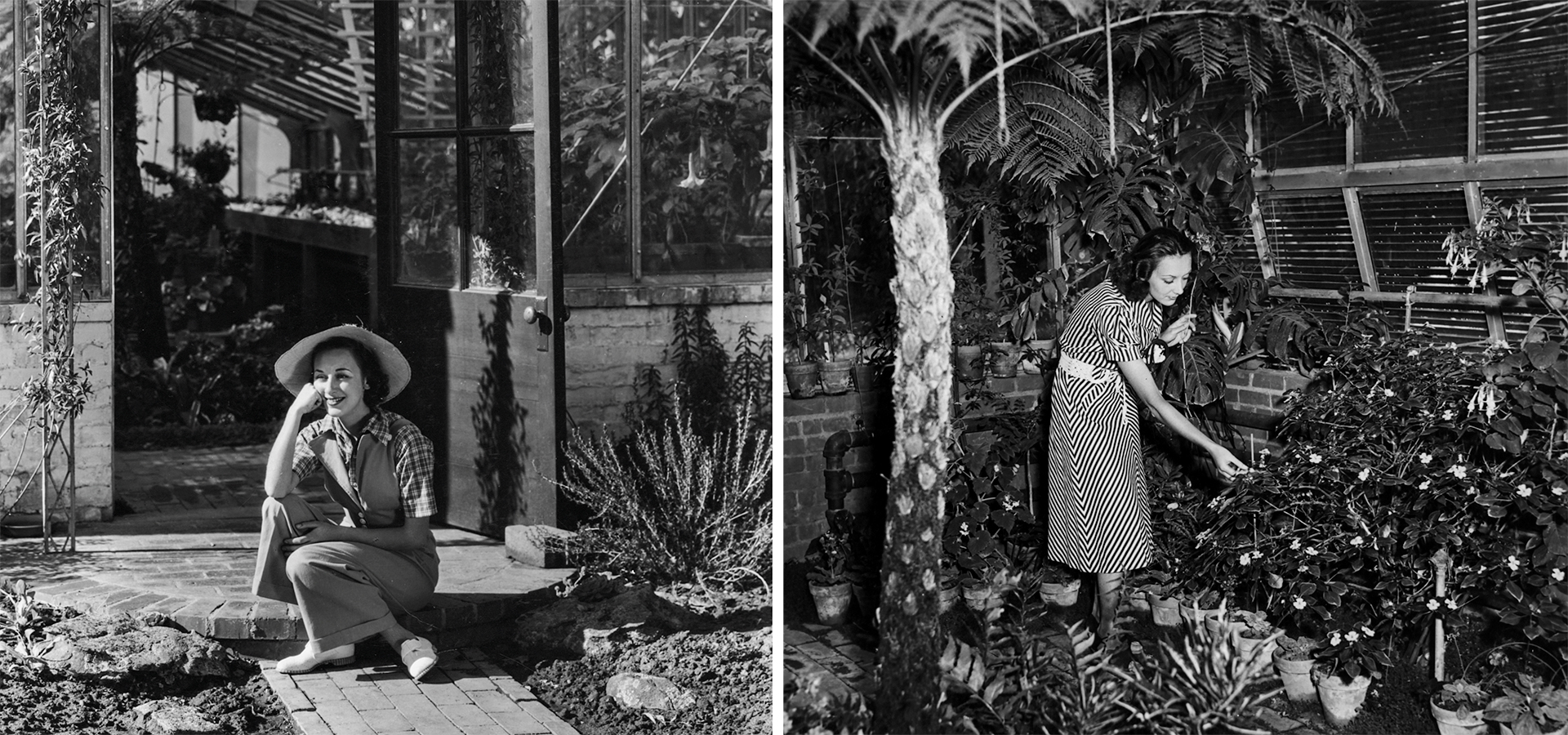
Above: Vintage photographs of Ann Dvorak courtesy of Christina Rice
•••
The property changed hands several more times over the decades. In 2011, the Alperts acquired it from prominent UCLA neuropsychiatrist Dr. Arne Scheibel, who owned it for 52 years and lived there until 2012. The Alperts, who are avid art and antique collectors and empty nesters, have stellar credentials as amateur restoration specialists. They’d previously bought and brought back to life another Encino estate just a stone’s throw away. A Spanish mission style rancho, it was built for The Wizard of Oz dance director Bobby Connolly in 1932. So with ample experience, the couple began a similarly loving three-year restoration of the Dvorak home and garden. The goal was simply to return the property to its glory days of the 1930s. “My husband and I are nostalgic for a time we never lived in,” Penny jokes.
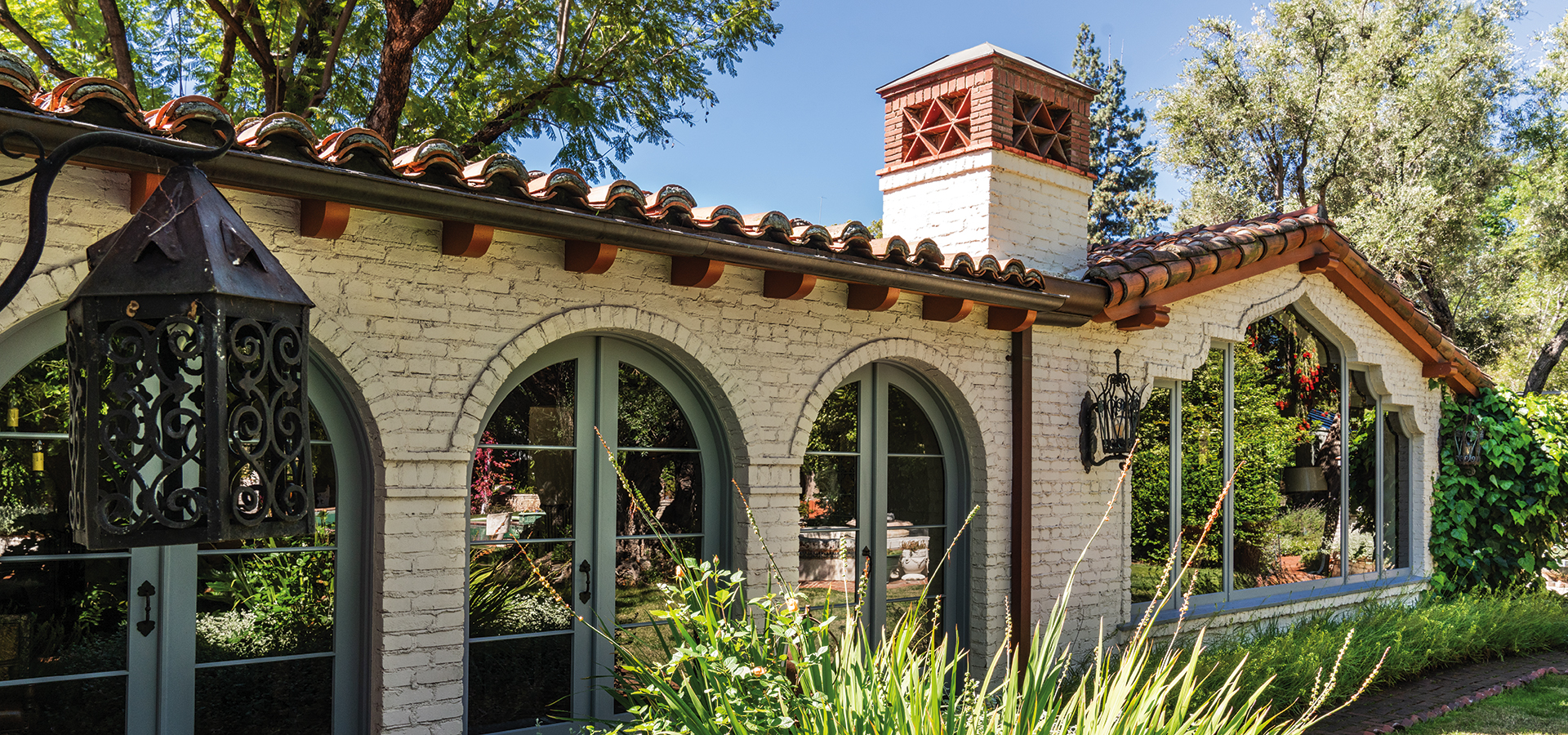
Above: The main residence
•••
With the help of Emily Booher, an associate at the landscape design firm Christine London Ltd., Penny tackled the task of transforming the weedy chaos into a lush and welcoming garden. “The bones of the property were already there,” recalls Emily. “Our job was to enhance and augment that.”
The first order of business was assessing the health of the massive mature trees—and save as many as possible. “We took out a few trees in the interest of getting light in,” Emily says. Another goal: improving sight lines between different “rooms” in the garden and spotlighting two enormous, gnarled olives, as well as a spectacular weeping bottlebrush tree, one of the largest in California, according to the arborist who inspected it. Only two venerable walnut trees remain of the thousands that once filled the property.
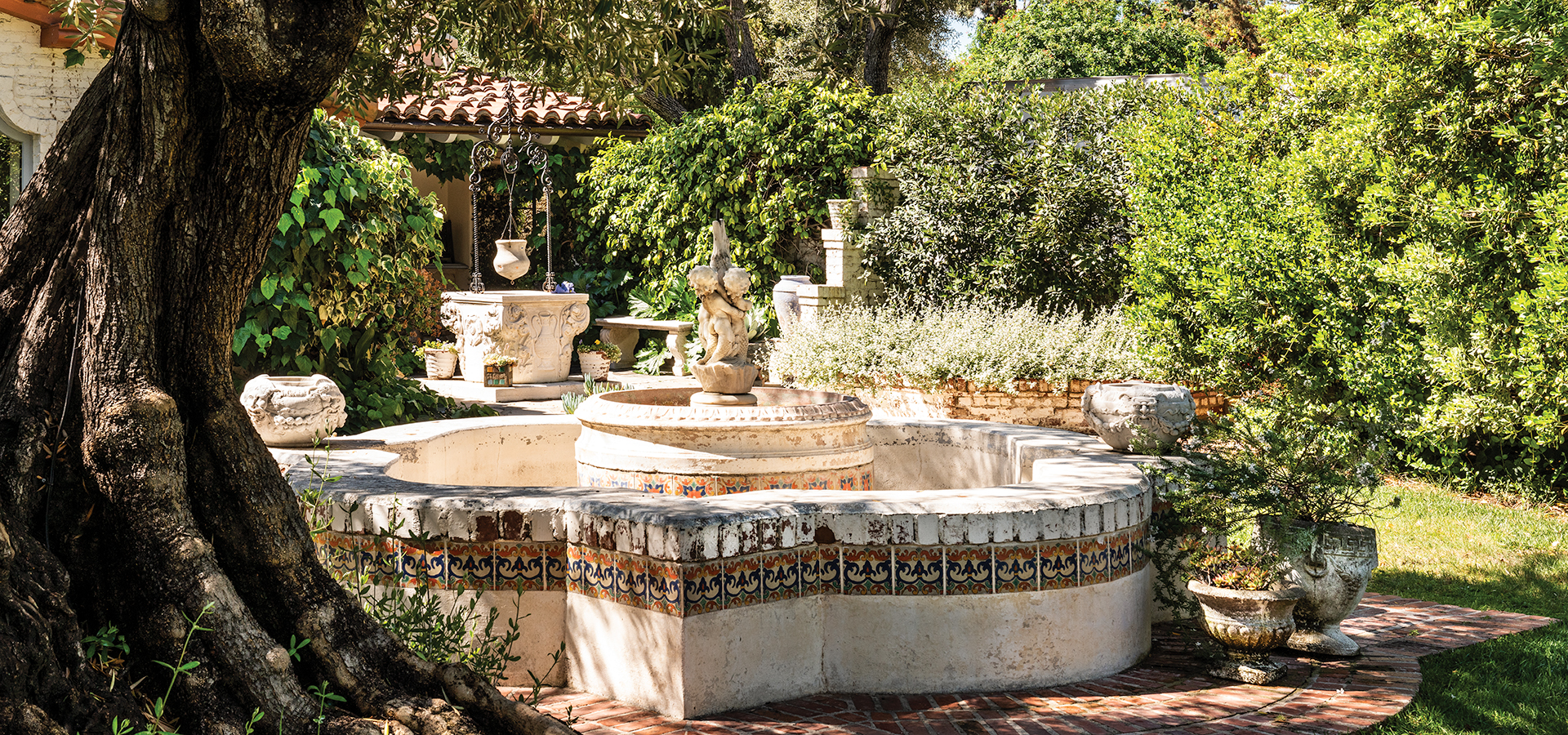
Above: One of several original fountains on the property, which spans nearly 2 acres
•••
In the process of battling back the ivy, Penny and Emily discovered a charming faux stream, pond, and tiny moon bridge that Dvorak had built at the rear of the property. Although all the water features are dry now, “We kept the pond as a relic of the former design,” Emily explains. They also discovered original brick walkways that had been entirely hidden in the ivy and linked and extended them to create more routes to meander.
“I really like structure and form in the garden,” says Penny. “But I like some wildness within that.” To that end, the “back nine”—the far end of the property—remains wreathed in ivy, passion fruit vines, and a sprawling white rambling rose. Today, a colony of feral honeybees fly in and out of a decorative chimney, and lemon, orange, and tangerine flowers perfume the air. Some of the fruit trees are original, but others, including loquat, nectarine, and apple, were added in the restoration.
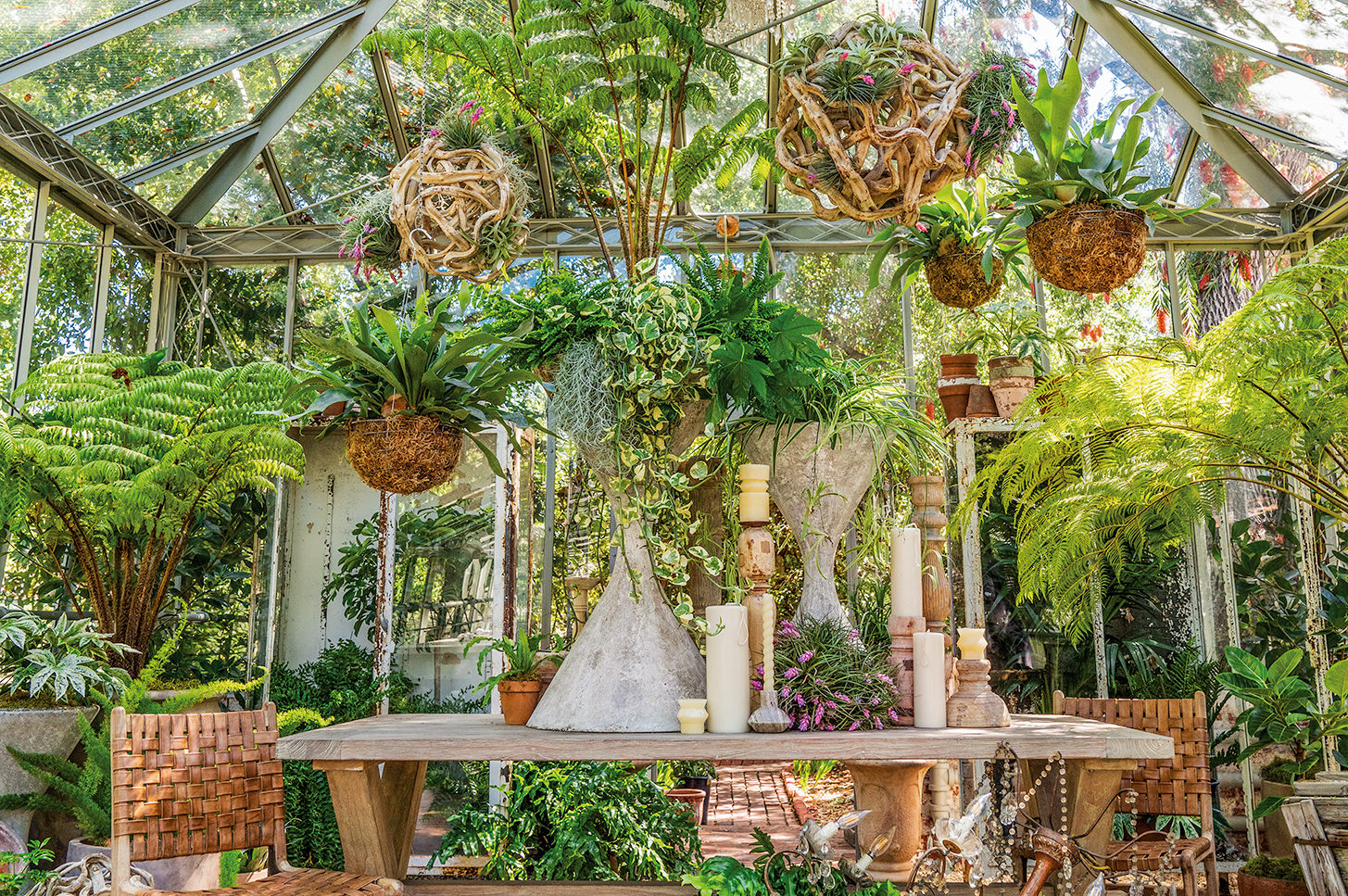
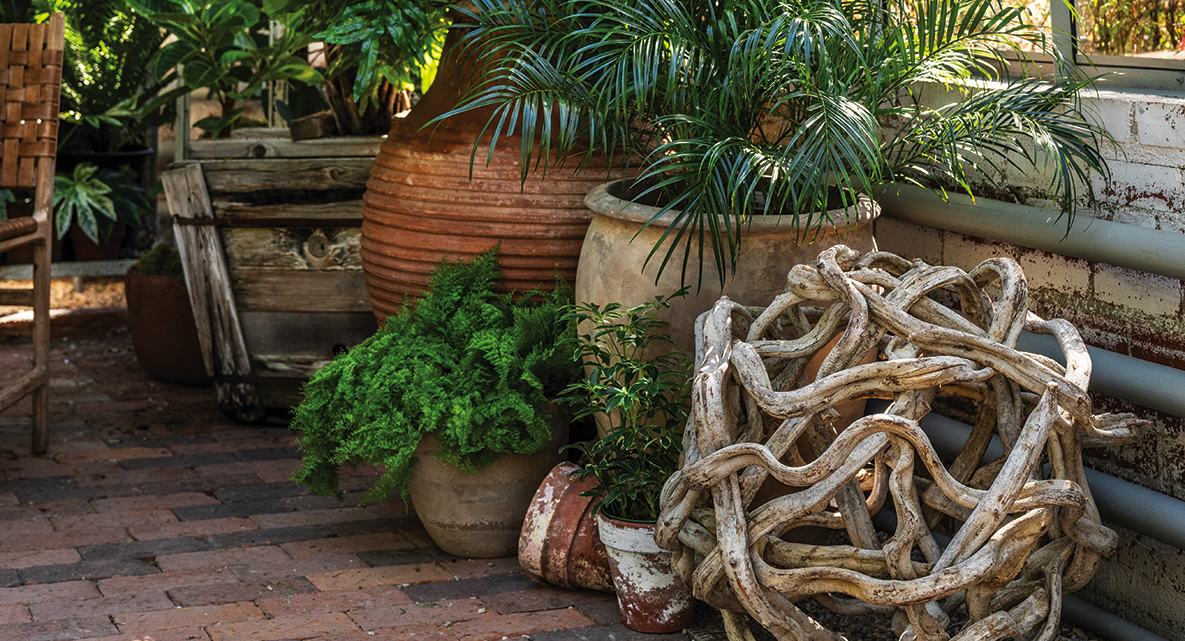
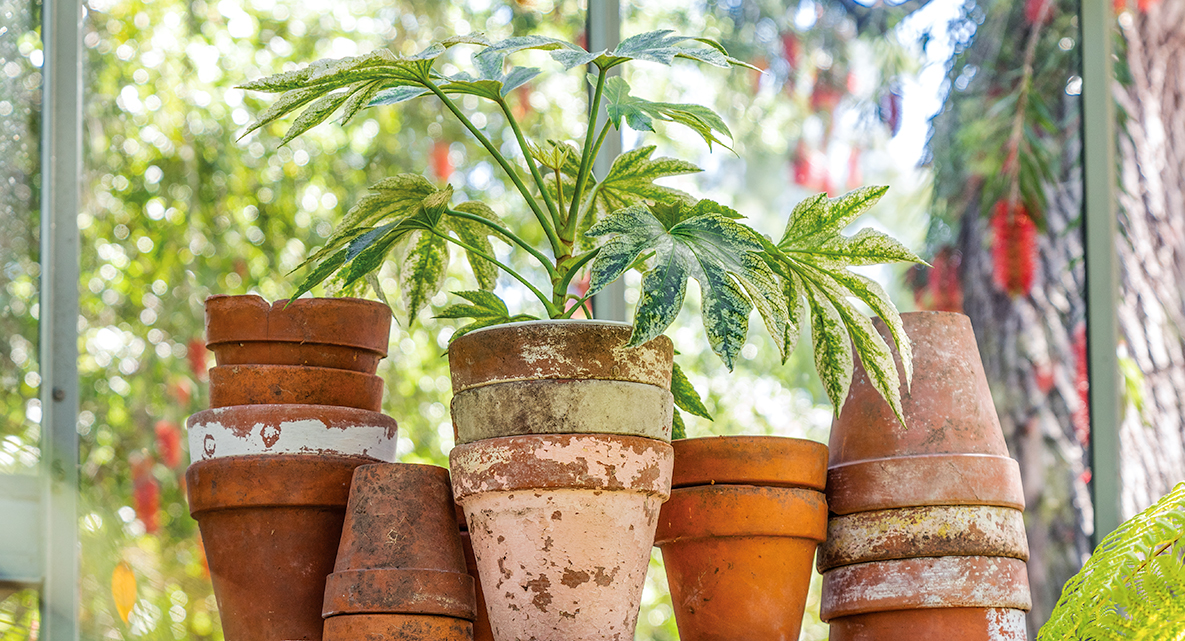
A Singular Vision
Ann Dvorak, according to her biographer, Christina Rice, “didn’t always make good choices for herself.” Rice, who published the engrossing Ann Dvorak: Hollywood’s Forgotten Rebel in 2013, says that although the thrice-married actress’ life was marked by strife, “She had a great connection to the gardens. She loved being outdoors, and she had a green thumb. Her time on the ranch was the most stable, happy time of her life.”
The garden may have also provided Ann with an escape from her domineering husband and the constricting studio system of the period. It was a unique place where she could call her own shots. Emily says the garden “has the layout of someone who designed it just the way they wanted it. It’s this jewel to be discovered as you take your time to look for details and relics.”
Among the details are a wealth of original and salvaged tile work, an area in which the couple has become experts. Thanks to copious publicity photos of Ann on the ranch, Penny had a library of historic images to use for reference in the restoration, but where there was nothing to work from, she turned to the 1929 Adamson House and Malibu Lagoon Museum, a prime example of Spanish Colonial Revival architecture, for inspiration.
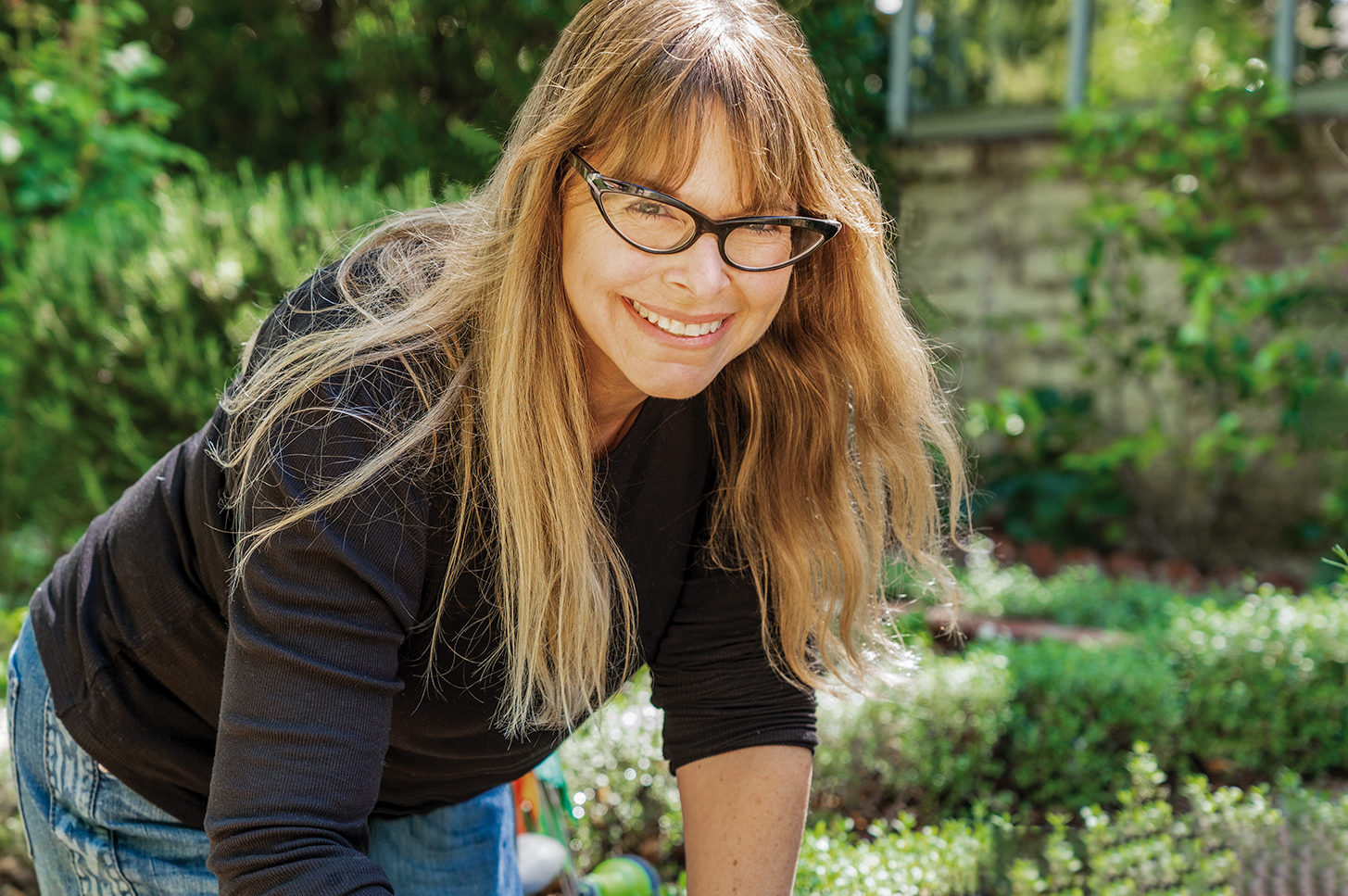
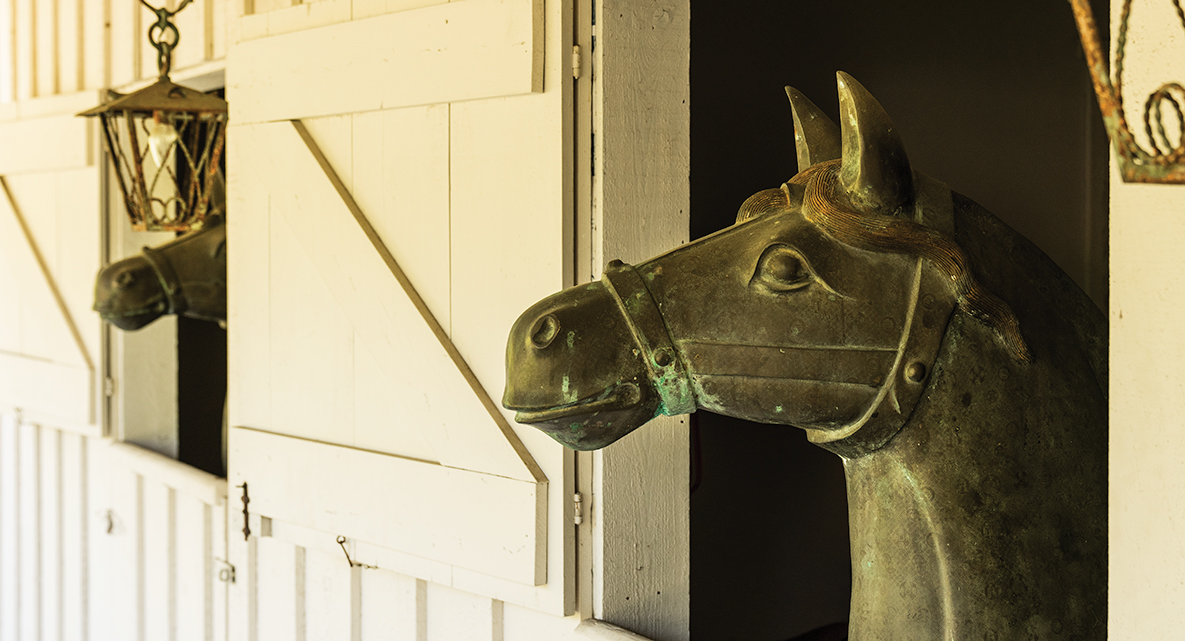
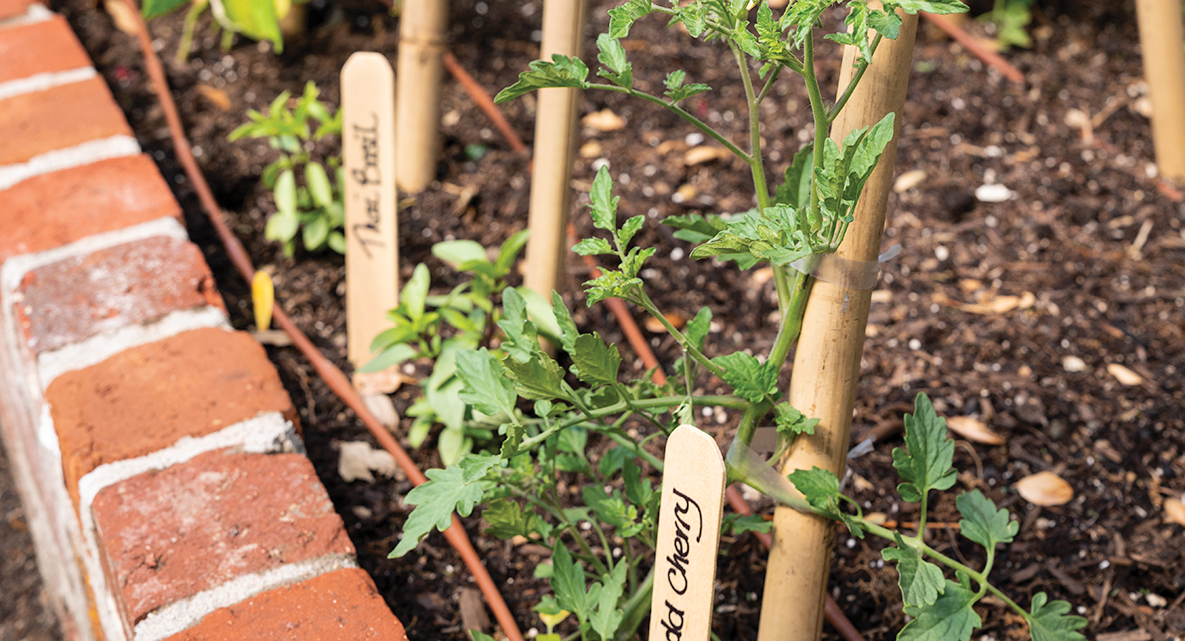
Penny’s formal vegetable and herb garden of raised brick beds behind the greenhouse is all new to the property, but the curvilinear planters echo shapes you see in a Spanish Colonial Revival gem like the Adamson House. Like all the new features Penny and Glen added, the kitchen garden is so beautifully integrated into the property that it looks like it has always been there.
Because the different garden areas create well-defined spaces, i.e., “rooms,” the property is ideal for outdoor entertaining. Penny hosts large gatherings on holidays, using the restored greenhouse as the food service area. She also has offered the garden for fundraisers for Our House Grief Support Center in Woodland Hills. Penny works for the nonprofit, facilitating grief support groups for children and serving on the Valley Advisory Board.
More than anything, the garden feels like a sanctuary, a state of being that eluded Ann Dvorak most of her life. “I knew these gardens had great potential,” says Penny. “Reviving them was very exciting.” Ann would no doubt feel the same.
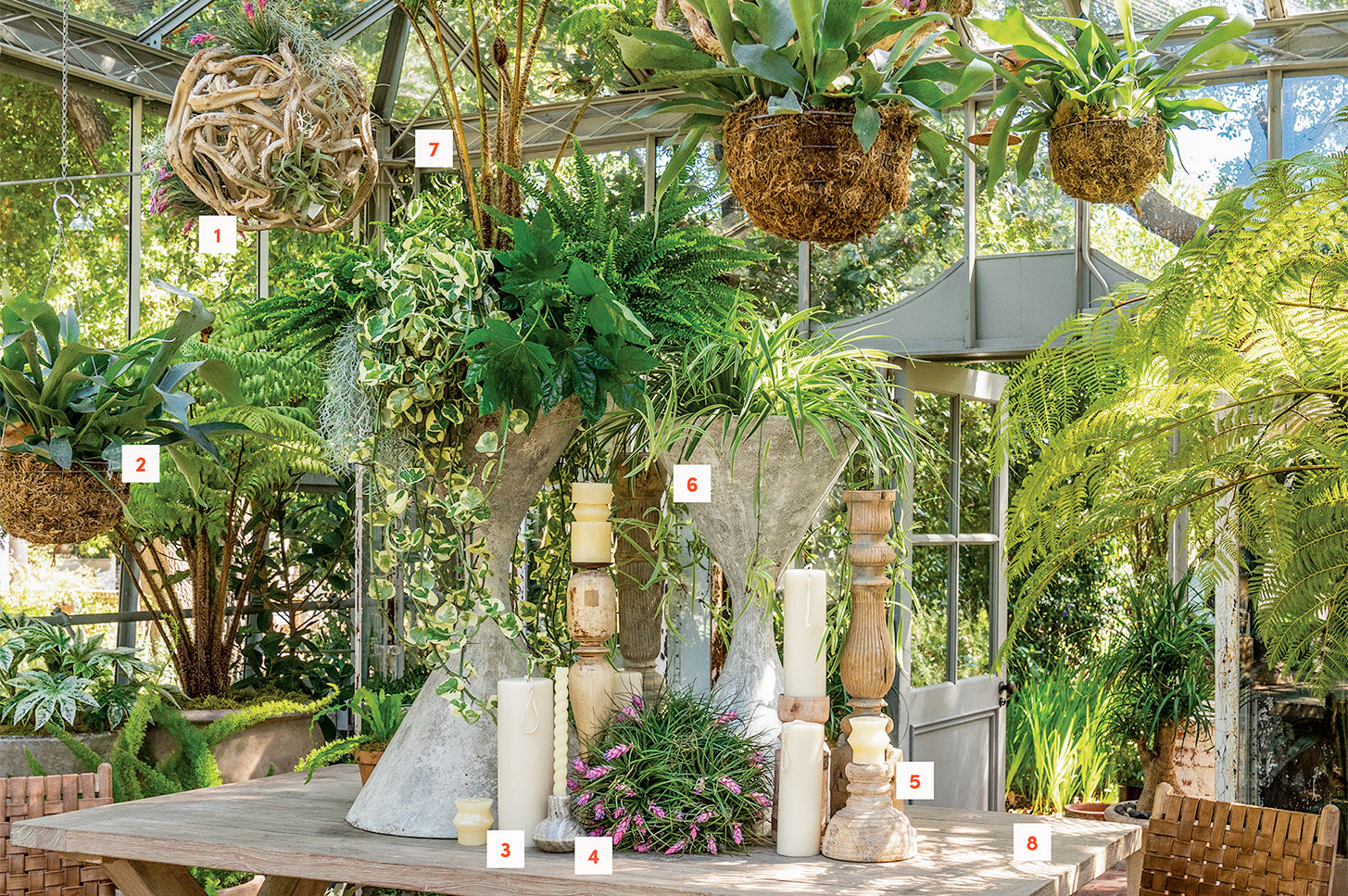
ROLLING GREENS’ SELECTIONS FOR OUR SHOOT
- Vine ball with tillandsia plants attached. Large ball, $395; small ball, $285; tillandsias (which require low light and frequent misting in warm weather) start at $12
- Staghorn fern baskets, $55
- Pillar candles; 4 by 12, $69 | 4 by 9, $57
- Marble taper candle holder, $24 | Twisted taper candle (pack of 2), $10
- Vintage wooden candlestick holders; from $42
- Willy Guhl hourglass planters, large $2,875; medium, $2,550
- Australian fern, $175
- Teak outdoor dining table, $1,850
Join the Valley Community






